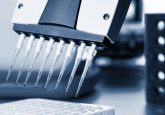Matrix effect in ligand-binding assay: the importance of evaluating emerging technologies

“Therefore, it is essential to continuously identify and evaluate emerging technologies, or look to novel approaches of existing technologies that can alleviate interference problems.”
The Emergent Technologies Action Program Committee (ETAPC) is a group that was founded out of the Ligand Binding Assay Bioanalytical Focus Group. The ETAPC is comprised of experts from both North American and European bioanalytical companies, CROs, technology vendors and government agencies. The ETAPC’s mission is to focus on identification and evaluation of new emerging technologies for biologics or novel approaches to existing technologies that will allow for a competitive advantage [1]. The Assay Interference team is one of the four working groups that make up the ETAPC and focuses its efforts on evaluating emerging technologies and new applications of existing technologies that will enable us to overcome specific and nonspecific interferences from matrix components to allow for the quantification of a biologic therapeutic, biomarkers and the detection of antidrug antibodies. The goal of this Editorial is to highlight the interferences that matrix can have on a PK or antidrug–antibody (ADA) assay, as well as give insight into a few technologies that have the potential to aid in reducing those interferences.
Click here to view the full article.
Our expert opinion collection provides you with in-depth articles written by authors from across the field of bioanalysis. Our expert opinions are perfect for those wanting a comprehensive, written review of a topic or looking for perspective pieces from our regular contributors.
See an article that catches your eye? Read any of our Expert Opinions for free.






